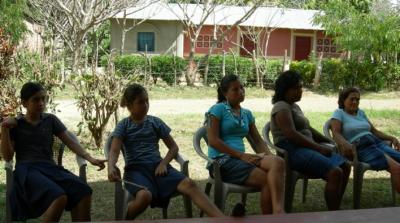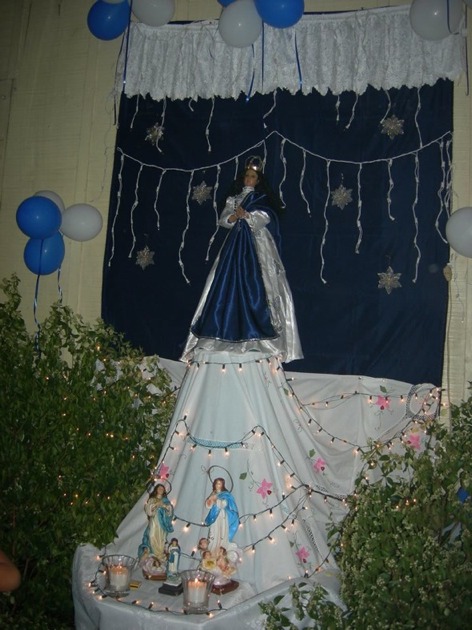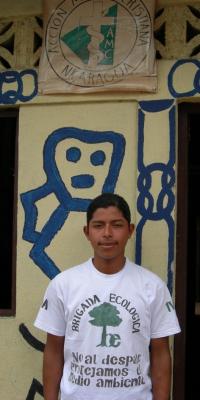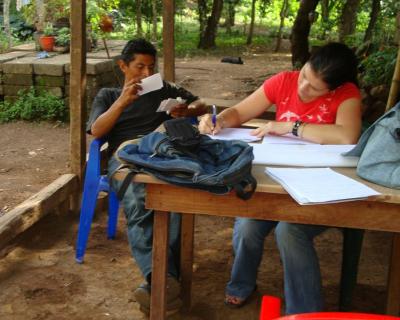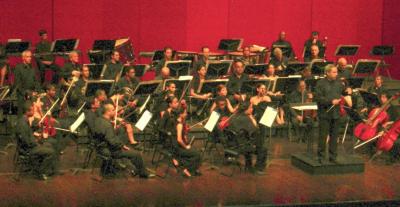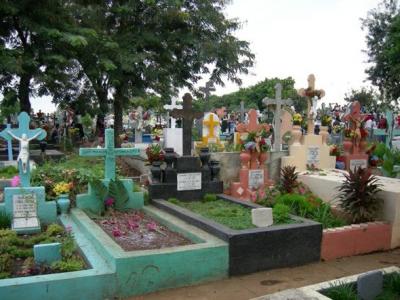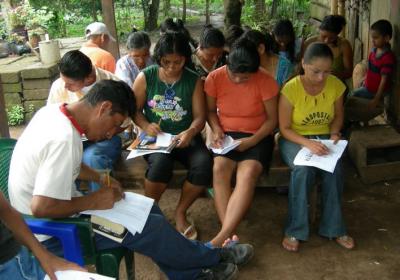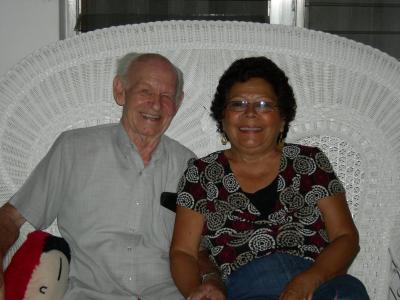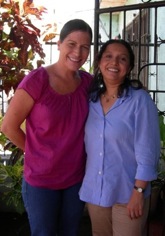La Gritería
My participation Monday night in the Gritería in barrio Santa Ana turned me into a Marianista of sorts. The Purísima and Gritería are part of what is an incredible popular religiosity and mass expression of Catholic faith and Nicaraguan idiosyncrasy (not without criticism from the growing Evangelical population, but that’s another post). The traditions were brought by the Spanish during colonialism and they have persisted into the present, with many families carrying on the practice of placing altars and giving out offerings to Mary for generations. I was invited by one of the families in my study to "gritar" (shout) in their barrio and went with my friend and her nieces and nephews, so we had a good-size group, better for singing and shouting with. The singing involves animated songs of devotion to Mary sung in front of the often-elaborate altars (imagine ceramic statues of Mary, colorful christmas lights strung plentifully, plants, flowers, and incense, blue and white balloons - Nicaragua’s national colors, figurines of flying angels and more) that have been placed by families in front of their houses throughout most of Managua’s barrios. For about two-and-a-half hours, we walked around the neighborhood, lining up in front of altars (people pass one group at a time to sing to Mary), singing our songs (think: "Mary, your name without stain", "Mary, you Celestial Virgin" - ok, there’s way too much symbolism for me to go into here...), and then receiving the gorras (gifts) given out by families hosting the altars (think Trick or Treat, but Nicaraguan, Economic-Crisis style: adults were given bags of rice, beans, even salt! oranges and bananas; children were given toys, candy, underwear, socks) - given to us for our singing and shouting but really as a symbolic offering to Mary for her blessings and protection. After singing, we shouted: "¿Quien Causa Tanta Alegria? La Concepción de María!", "Que Vive La Virgen! Viva!", and "María de Nicaragua, Nicaragua de María!". And there you have it, La Gritería!
